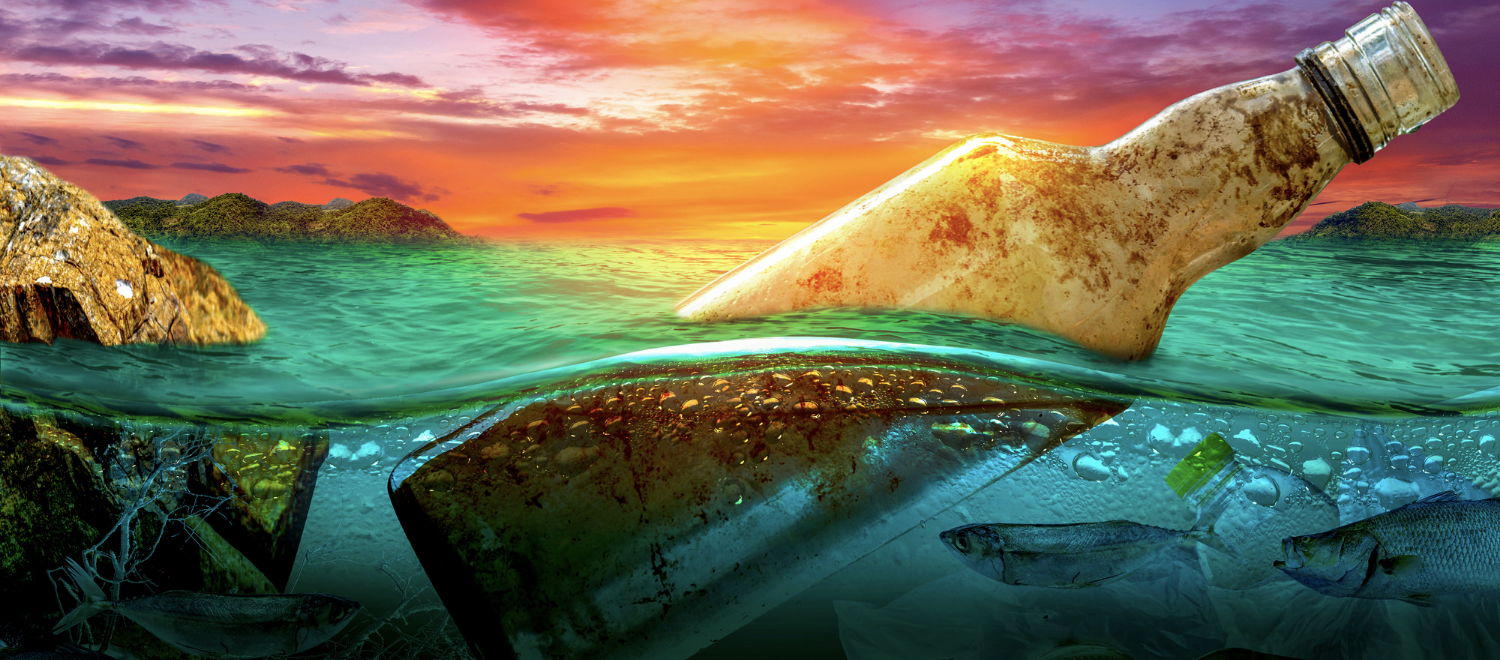Our world is an ocean planet. Looking back at Earth from Space, no color is as distinctive as blue. Oceans cover 72% of the entire planet, hold over 97% of its water, host thousands of species, and produce half of all the oxygen in the atmosphere.
However, the general remoteness of the oceans makes their significance easy to forget. Like many other natural ecosystems, oceans are currently threatened by a vast range of human-fueled processes, including global warming, acidification, overfishing, and above all, pollution. According to the United Nations Environment Programme, 13 million tonnes of plastic end up in oceans annually.
Fortunately, the increasing awareness about climate change and sustainability is pushing organizations to develop solutions for the prevalent ocean pollution problem. In our previous article, we shared five remarkable ways the Internet of Things can help clean up the oceans. Today, let’s look at five groundbreaking IoT-driven products that promise to make a massive difference in the fight against ocean pollution.
1. System 001 - The Ocean Cleanup
The Ocean Cleanup, a tech-centric environmental non-profit based in the Netherlands, is building solutions for extracting plastic waste from the oceans. After extensive testing in the North Sea, the organization deployed its first full-scale model, System 001 (Wilson), in the Great Pacific Garbage Patch in early 2019.
Wilson features a long U-shaped barrier dragged by a vessel. The barrier sweeps the ocean surface, guiding plastics into a retention zone at its far end. It uses satellite imaging and IoT sensors to track plastic movement and find highly polluted areas, improving cleanup efficiency. Furthermore, Wilson is powered 100% by solar energy and relies on intelligent IoT systems to detect energy waste and optimize operations.
Although initially shaky, System 001 was refined over several months, resulting in a system that has captured thousands of tons of plastics in oceans and waterways around the Pacific Basin. Currently, the organization is gearing up to launch a large-scale IoT-powered ocean cleaning system, dubbed System 002 (Jemma), to clean ocean garbage patches worldwide.
2. The Interceptor - The Ocean Cleanup
Besides System 001 and 002, The Ocean Cleanup has developed a solution for trapping plastic in feeder rivers. The Interceptor is a river-friendly garbage collector with a barrier that extends to one side of a river. This barrier guides waste flowing with the current toward the Interceptor for collection.
The Interceptor relies on IoT sensors and geolocation systems to identify the best position to place the barrier. Sensors are also used to distribute debris equally across the vessel’s dumpsters, maximizing the amount of plastic waste collected in one trip. Most significantly, Interceptors are internet-connected, allowing The Ocean Cleanup to collect valuable data to drive improvements.
3. Seabin V5 - The Seabin Project
Two Australian surfers, Andrew Turton and Pete Ceglinski, founded the Seabin Project in 2015 as a vehicle for innovations focused on cleaning up the oceans. The organization develops upstream solutions for waterways in highly populated areas. By capturing the debris before it reaches the oceans, the Seabin Project is solving the ocean pollution problem one river at a time.
Seabin V5, the project’s latest solution, is an ocean garbage bin that functions as a pool skimmer. It draws electricity from shore or a boat to power a pump that sucks debris out of the water, traps it in the bin, and pushes the clean water back into the ocean. On average, a Seabin catches 44 pounds of waste per day and uses IoT integration to identify pollution hotspots, maximize efficiency, and eliminate the chances of interfering with marine animals. The V5 is also equipped with oil absorbers to deal with oil contamination.
4. WasteShark - RanMarine Technology
WasteShark is an aquadrone that floats on the ocean surface and eats up plastics and other floating debris. It was developed by RanMarine Technology in 2018, with the primary goal of collecting plastic waste before currents, winds, and tides drag it out into the open ocean.
Designed like a catamaran, WasteShark can hold a decent 700 pounds of plastic waste before it needs emptying. The device is also equipped with sensors that monitor pollution levels and collect real-time data, enabling users to track its efficiency and direct it to the most polluted areas.
5. FRED - Clear Blue Sea
Clear Blue Sea is an environmental non-profit based in San Diego, California. The organization’s exemplary commitment to innovating solutions for cleaning up rivers, bays, and oceans. Clean Blue Sea’s top innovation is FRED (Floating Robot Eliminating Debris), a semi-automated robot that harvests floating pollutants.
FRED runs 100% on solar power and collects marine debris using booms, belts, and bins. At full scale, it picks up plastics from as long as five meters. Moreover, FRED implements IoT sensors to detect nearby marine animals and deploy acoustic pingers to drive them away. FRED also has technology that collects weather data for predictive operations, minimizing the chances of getting caught in a storm.
Currently, FRED is in its pilot stage after four prototypes. Clear Blue Sea has set 2023 as the year FRED will be ready for mass adoption.
A Brighter Future for Our Oceans
Although the state of ocean pollution is as grim as ever, the products above give the world hope that all is not lost. They prove what humans can do if they take a daunting global problem and turn it into an opportunity for transformative innovation and progress. The projects also showcase how one challenge can have a diverse range of solutions.
If you are an IoT supplier or developer, let these technologies inspire you to offer products that make a genuine difference in the world.





